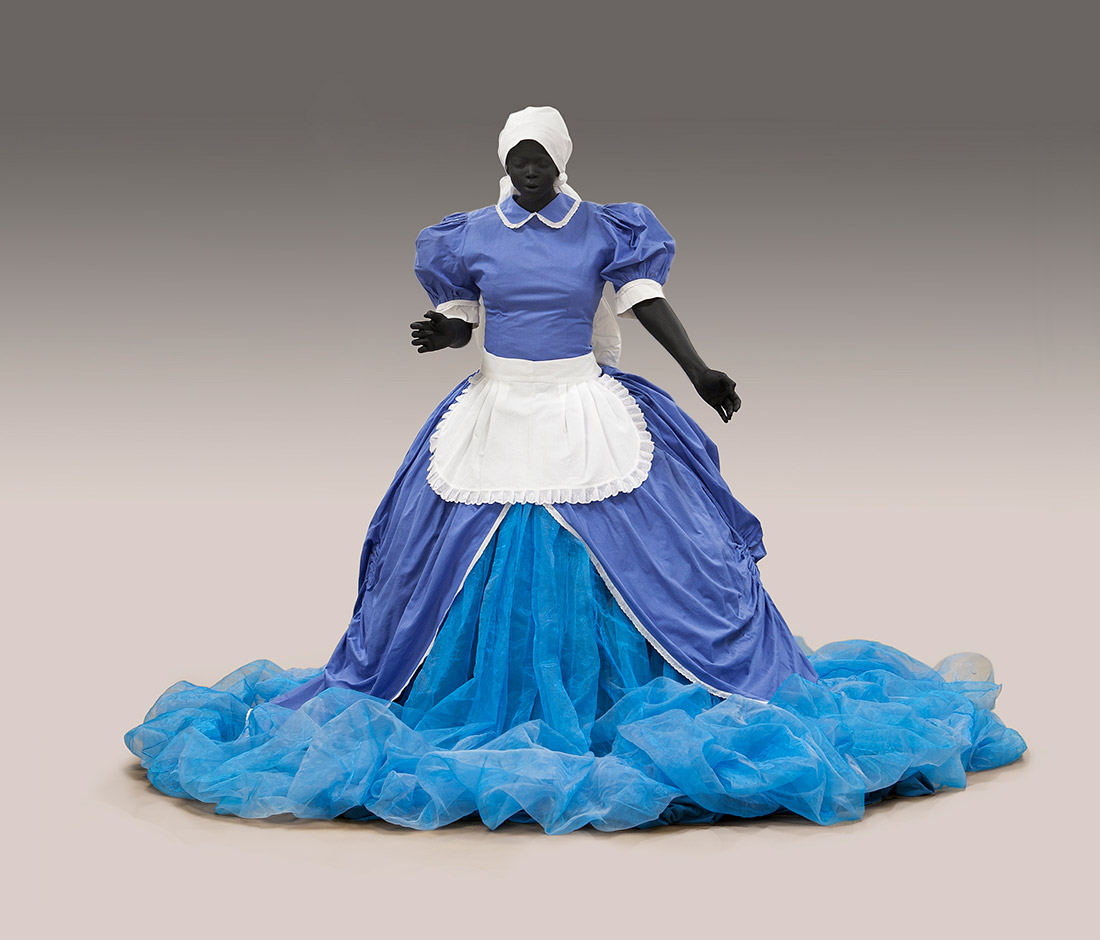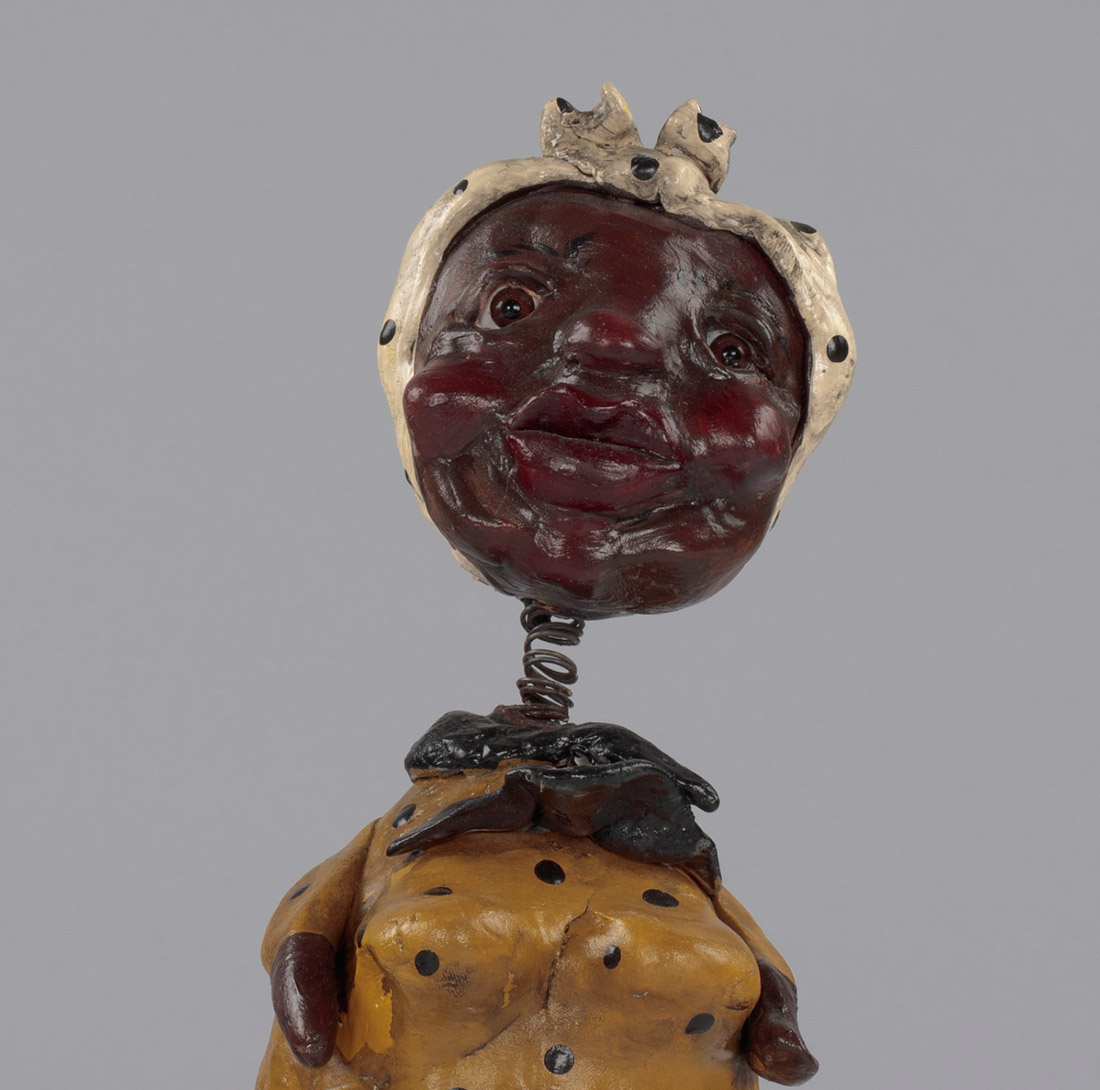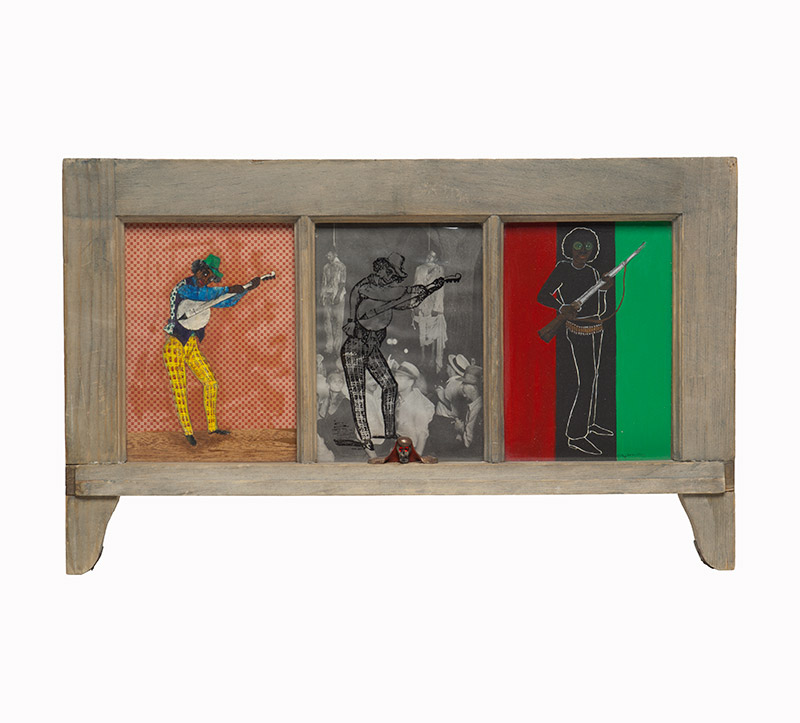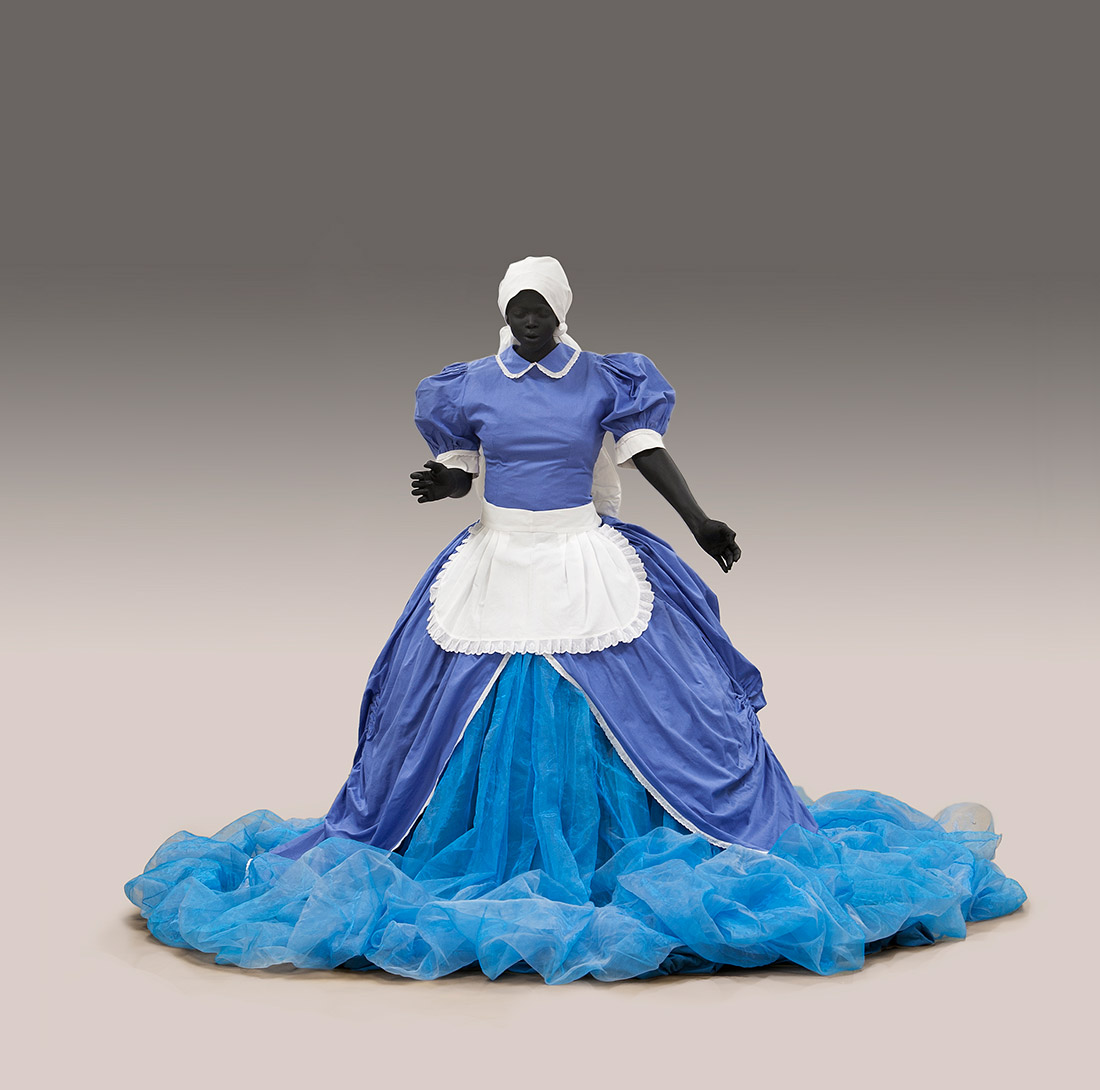Mary Sibande’s Sophie–Merica addresses challenges of race, labor, and representation in post-apartheid South Africa, particularly through the lens of the black female domestic worker. Informed by the lives of Sibande’s mother and grandmother, both domestic workers, Sophie– Merica blends fantasy and reality, high art, and handicraft in the form of a female maid. With closed eyes, Sophie dreams of life beyond domestic labor. Her blue ordinary uniform expands to a Cinderella-like volume, transforming the garments of drudgery into a fantasy ball gown. Through a series of life-size sculptures, Sibande presents the elaborate imaginings of splendor, beauty, and power that emanate from behind Sophie’s impassive face. Her sculpted, smooth polished black skin suggests presence and absence, silence and impenetrability. Through body and dress, Sibande constructs the black female figure as a formidable “sight of memory” that articulates its continuous endurance of “unspeakable things” in unspoken ways. Sophie’s body and dress are the vehicles through which histories and stereotypes of black female labor are transformed through reverie and fantasy.

Mary Sibande, b. 1982, South Africa, Sophie–Merica, 2009, Mixed-media installation, 74 x 120 in. (188 x 304.8 cm), National Museum of African Art, Smithsonian Institution, museum purchase, 2015-10-1









 Robert Lee MacCameron Two Negro Musicians, n.d.,
Robert Lee MacCameron Two Negro Musicians, n.d.,
